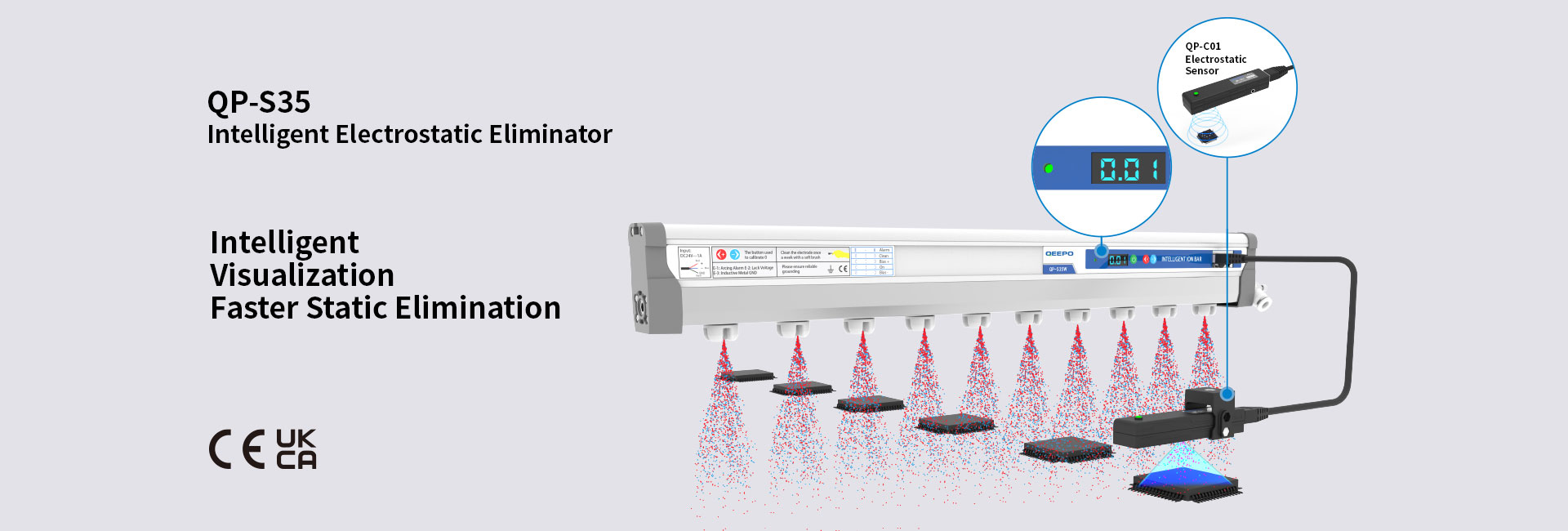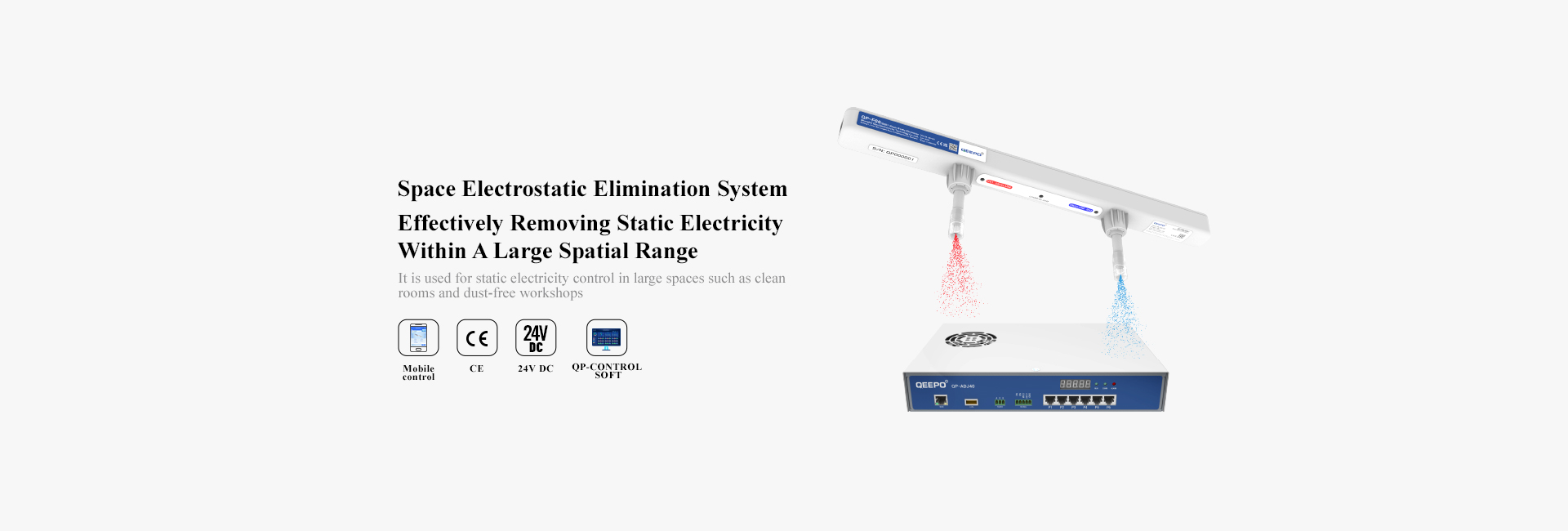Plastic products usually have high insulation properties, so the plastic industry is also a high-risk area for static electricity problems. Effective static elimination treatment must be carried out in the bag making area, molding, plastic bottle production, masterbatch transportation and other process links, otherwise it will cause serious problems such as dust attraction, electric shock, transportation disorder, and pipeline blockage. So static eliminators are essential in industrial production processes. Next, we will analyze: What scenarios require static elimination? Where can I install a static eliminator? What kind of static eliminator should I choose?
1. Static elimination of bag making machine
Problem: For the vast majority of bag making processes, static electricity can cause the product to stick to the bag at the outlet of the sealing machine, resulting in uneven bag collection.
QEEPO suggestion: Install high-performance ion rods at the inlet of the sealing machine to neutralize static electricity in front of the sealing machine. If folded bags and thicker bags need to be equipped with static elimination rods at the top and bottom respectively.
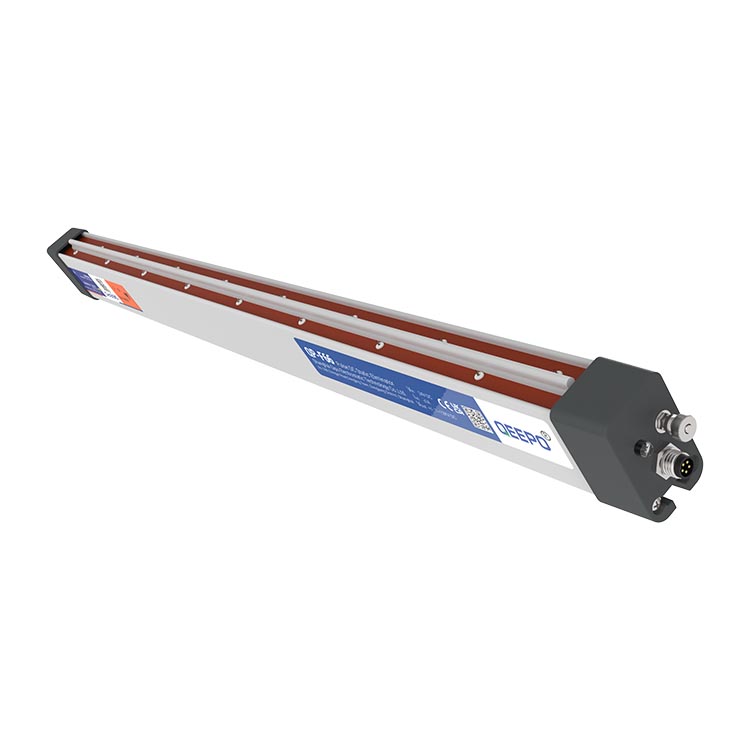
2. Plastic bottle production – automatic transportation and processing
Problem: In the production of plastic bottles, a large amount of static electricity will accumulate after falling into the silo, which can cause serious electric shock.
QEEPO suggestion: Install an ion air rod above the hopper to prevent bottles from sticking to each other and causing electric shock to operators.
3. Plastic bottle production – bottle cap injection molding
Problem: In the production of bottle caps, static electricity needs to be eliminated to prevent dust adsorption, electric shock to operators, and product misalignment.
QEEPO suggestion: Install ion rods (or other long-distance static eliminators such as ion fans) above the silo.
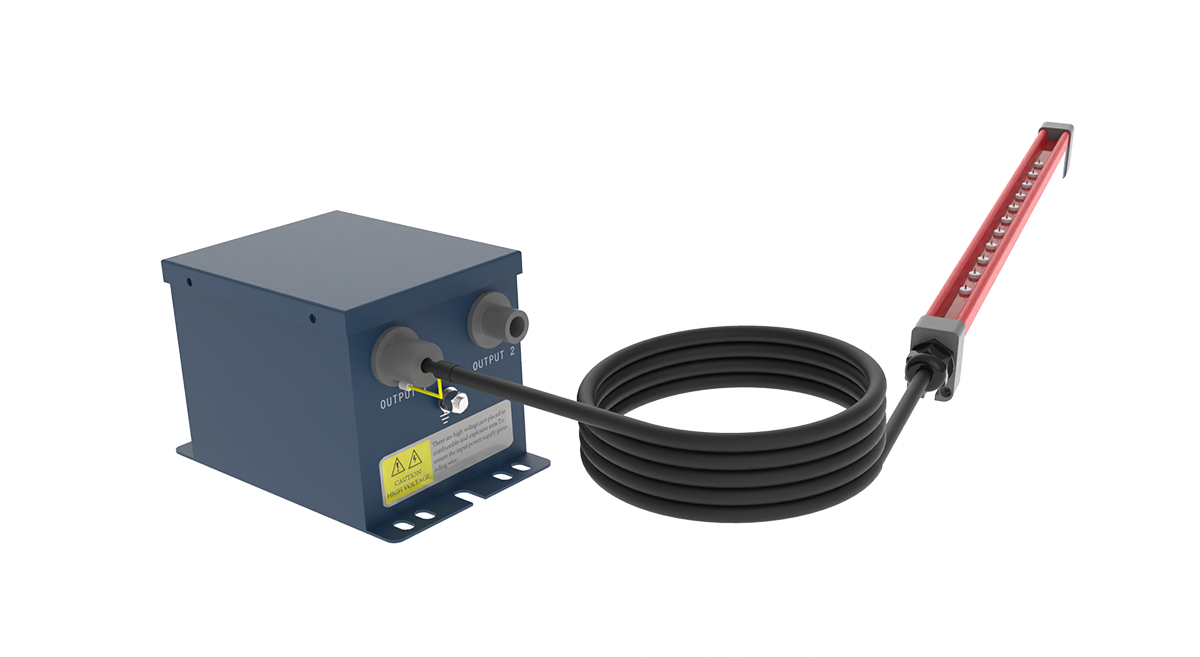
4. Plastic bottle production – blow molded blanks
Problem: Static electricity issues run through the entire plastic bottle and cap industry. During blow molding, there may be a phenomenon of the billet adhering to the mold.
QEEPO recommendation: Install ion rods at a distance of 500mm to neutralize static electricity in the billet and prevent it from being adsorbed by the mold. When the operating distance requires a longer distance, a gas source ion rod can be selected to eliminate static electricity from a distance of about 1 meter.
5. Plastic Bottle Production – Raw Material Filling
Problem: When filling plastic containers with dry products such as powder or granules, the following issues may occur:
The product is adsorbed around the top screw of the container; The product sticks to the container; The product may even jump out of the container; The product will absorb dust.
QEEPO suggests installing an ion rod at a position of 25 to 50mm above the container before filling to neutralize static electricity on the top of the bottle.
6. Plastic bottle production – can misalignment
Problem: During the production and transportation of plastic bottles, it is common for containers to become misaligned due to excessive static electricity.
QEEPO recommendation: Ionic rods can be installed on both sides of the conveyor belt to prevent misalignment before infusion.
7. Static electricity removal on injection molded part conveyor belt
Problem: Static electricity can cause injection molded parts to adhere to the conveyor belt and not fall into the collection box.
QEEPO suggestion: Static eliminators can be installed above the conveyor belt, or ion air rods can be installed according to specific situations.
8. Static elimination in plastic film hot vacuum forming
Question 1 (Edge trimming, chip cutting, and cleaning issues): When cutting or processing molded parts, dust in the air will be adsorbed, so it is necessary to clean them before coloring and packaging.
QEEPO suggestion: You can choose between manual and automatic cleaning equipment, using ion air guns, ion air nozzles, etc.
Problem 2 (hot forming, vacuum forming problems): Heat, pressure, and separation from the mold can cause the product to have static electricity, which can lead to the product sticking to each other and adsorbing a large amount of dust when stacked.
QEEPO recommendation: Ionic fans or static elimination rods can be used.
9. Lightweight plastic products stick to the surface of molds
Problem: For hollow and thin-walled injection molded parts, such as disposable syringes and other medical products, the injection molded parts may adhere to the mold surface due to static electricity and not fall into the collection system.
QEEPO recommendation: Choose an ion fan or ion air rod, and blow ion airflow from above the mold when it is opened to neutralize static electricity on the injection molded parts.
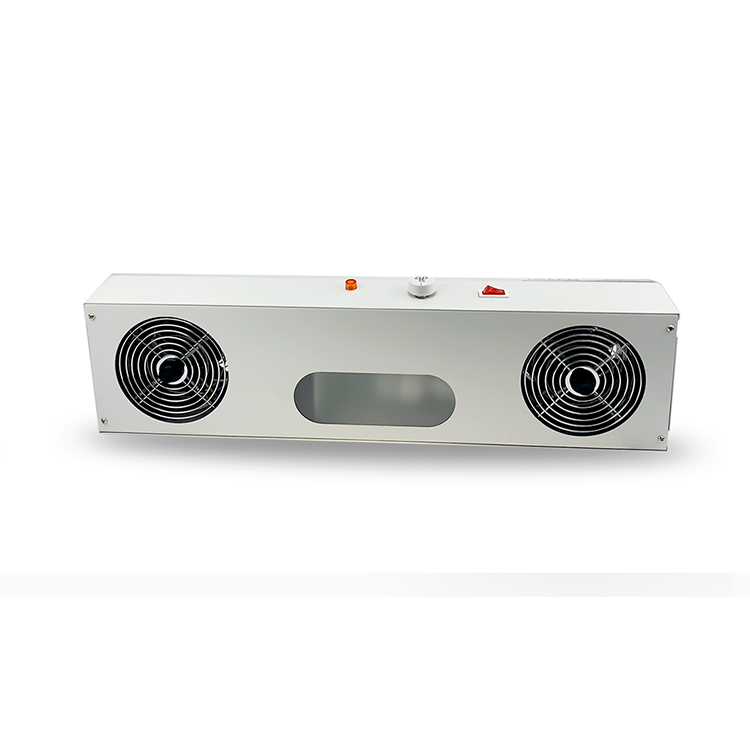
10. Static electricity removal for phone cases and plastic cases
Problem: Static electricity can easily cause plastic shells to adsorb dust and also make it easy for workers to click on them.
QEEPO suggestion: Install an ion fan above the workbench to neutralize static electricity
11. Molding – Collection
Problem: Small plastic parts with a large amount of static electricity accumulate in the hopper, which can absorb dust in the air and cause electrostatic shock.
QEEPO recommendation: When injection molded parts fall off into the hopper, use an ion rod to effectively eliminate static electricity, prevent dust adsorption, and prevent electric shock.
Post time: Aug-21-2024

